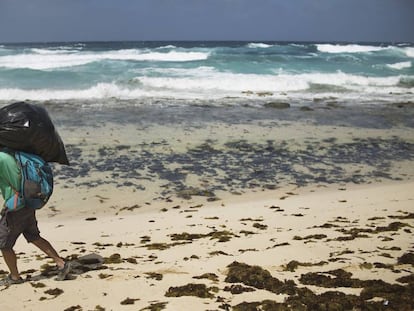Madrid prepares to confront radioactive emergencies
The region is the first without a nuclear plant to draw up a contingency plan

The Madrid region is preparing a contingency plan to deal with potential radioactive emergencies such as a terrorist attack involving a dirty bomb, radioactive debris from a satellite or the theft of sensitive material.
The regional government is keen to point out that the threat is nothing new and that the plan is simply a preventive measure that is required by national legislation.
There are sensors in towns across the Madrid region and the data is received immediately in a control center
Civil Protection Plan
The plan, which is now available for public perusal, flags up the importance of avoiding panic, isolating the source of the toxic material and acting to limit the radiation that the specialists are exposed to.
Only four other Spanish regions have taken similar steps – Castilla-La Mancha, Extremadura, Basque Country and Catalonia – all of which have nuclear plants within their boundaries.
“The plan facilitates the organization of a response in the event of an accident,” says Carmen Martín Curto, who heads the team responsible for the 200-page Civil Protection Plan document. “The risk now is the same as it has been in recent years. All we are doing is working to meet state regulations. The volume of traffic carrying these materials is not very high in Madrid.”
Barajas and Méndez Álvaro
Madrid-Barajas airport and the customs depots in Coslada and Méndez Álvaro are the most likely source of traffic transporting radioactive materials. Before radioactive material can be transported, the relevant administrations alert the security forces of their movements, and this information is always transmitted confidentially to avoid sabotage or theft. A similar level of confidentiality applies to facilities holding radioactive materials.
The document details how to react in the event of an accident at any one of these installations. It also explains what to do in the event of a terrorist attack, fall of radioactive debris from a satellite, or a toxic cloud.
The unintentional theft of toxic material
“There has been the occasional theft of radioactive materials, mainly from construction sites and work zones,” says the Civil Protection Plan document, which adds that thieves are typically unaware of the radioactive nature of the stolen material.
“To make a dirty bomb, both radioactive material and conventional explosives are required,” notes the document, which also explains that the terrorist engineering such a weapon would also be exposed to fatal levels of radiation. “Although the probability is low, it can never be totally ruled out. It is believed that even for suicide bombers, making and setting off a dirty bomb containing high levels of radioactivity would be pretty complicated.”
Specialists highlight the fact that Spain has 900 detection points that are constantly measuring gamma radiation levels, and any rise in levels would trigger an alert. “There are sensors in towns across the Madrid region and the data is received immediately in a control center located in the National Center for Emergencies,” says the document.
English version by Heather Galloway.
Tu suscripción se está usando en otro dispositivo
¿Quieres añadir otro usuario a tu suscripción?
Si continúas leyendo en este dispositivo, no se podrá leer en el otro.
FlechaTu suscripción se está usando en otro dispositivo y solo puedes acceder a EL PAÍS desde un dispositivo a la vez.
Si quieres compartir tu cuenta, cambia tu suscripción a la modalidad Premium, así podrás añadir otro usuario. Cada uno accederá con su propia cuenta de email, lo que os permitirá personalizar vuestra experiencia en EL PAÍS.
¿Tienes una suscripción de empresa? Accede aquí para contratar más cuentas.
En el caso de no saber quién está usando tu cuenta, te recomendamos cambiar tu contraseña aquí.
Si decides continuar compartiendo tu cuenta, este mensaje se mostrará en tu dispositivo y en el de la otra persona que está usando tu cuenta de forma indefinida, afectando a tu experiencia de lectura. Puedes consultar aquí los términos y condiciones de la suscripción digital.
More information
Archived In
Últimas noticias
Half of Scotland is in the hands of 420 property owners
Reinhard Genzel, Nobel laureate in physics: ‘One-minute videos will never give you the truth’
Pinochet’s victims grapple with José Antonio Kast’s rise in Chile
From digital curfews to blocking apps: How technology experts protect their children online
Most viewed
- Pablo Escobar’s hippos: A serious environmental problem, 40 years on
- Reinhard Genzel, Nobel laureate in physics: ‘One-minute videos will never give you the truth’
- Why we lost the habit of sleeping in two segments and how that changed our sense of time
- Charles Dubouloz, mountaineering star, retires at 36 with a farewell tour inspired by Walter Bonatti
- The Florida Keys tourist paradise is besieged by immigration agents: ‘We’ve never seen anything like this’










































